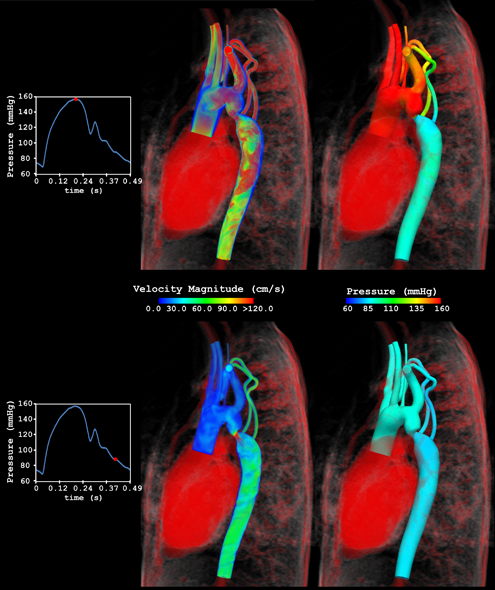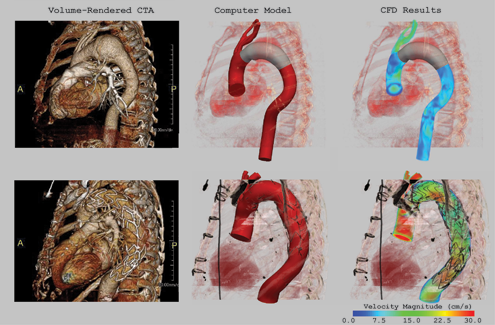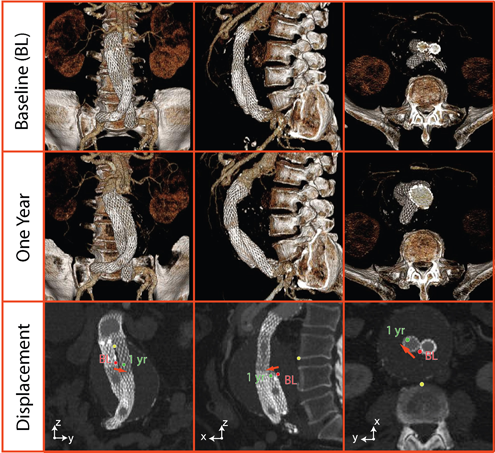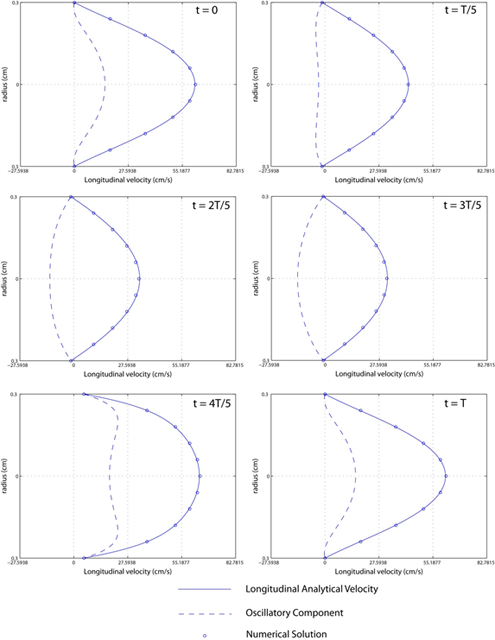Computational Mechanics
We are interested in developing formulations to perform large-scale patient-specific cardiovascular simulations. We develop methods to simulate Fluid-Structure Interactions and novel Boundary Conditions techniques for blood flow simulation.
Fluid-Solid-Growth
Understanding the long-term evolution of the arterial wall in response to changes in the biomechanical environment requires adequate laws that characterize the growth and remodeling of the different constituents of the vessel. These formulations are of special relevance for abdominal aortic aneurysms (AAA) and cerebral aneurysms.
Pathophysiology Research
Patient-specific computational tools can be used to further understand hemodynamic changes under various physiologic blood flow conditions and uniquely investigate potential sources of morbidity in a manner not possible with current diagnostic modalities. For example, in-silico models enable the study of the effect of exercise without the need to image the subject under actual exercise conditions. In-silico modeling is also useful in studying abnormal biomechanical stimuli present in many cardiovascular conditions, including abdominal aortic aneurysms (AAA). The figure below shows differences in time average wall shear stress and oscillatory shear index in 8 AAA patients under resting and exercising conditions.
Surgical Planning
We are interested in using computational techniques to predict blood flow and pressure in a patient-specific manner to support the decision-making process in surgical procedures such as carotid artery stenting (CAS), carotid endarterectomy (CEA), and thoracic and abdominal endovascular repair (TEVAR and EVAR).
Medical Device Design and Performance Evaluation
We are interested in developing computational tools to evaluate the performance of endovascular stent-grafts for thoracic and abdominal aneurysm repair. In particular, we are focused on understanding the problem of endograft migration.
Mathematics
We are interested in using Partial Differential Equations to perform Verification and Validation (V&V) studies of cardiovascular simulations.






